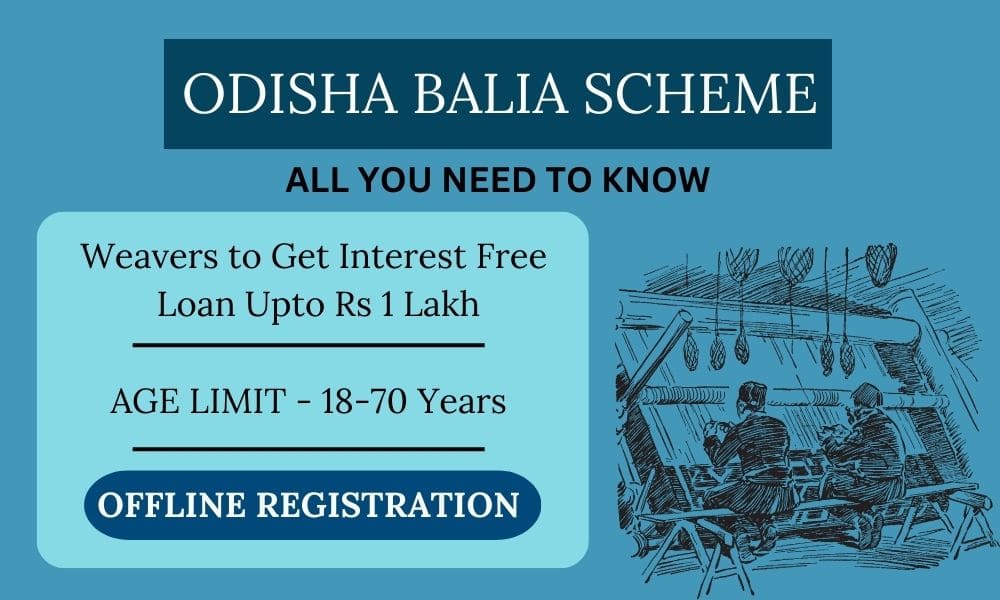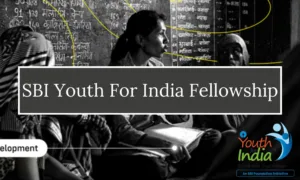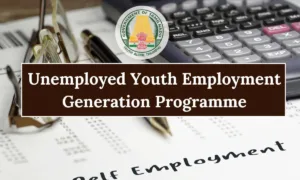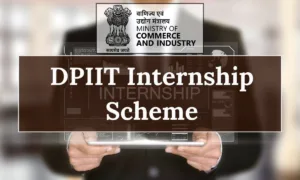The Odisha Government has recently boosted its support for weavers and handloom artisans through the BALIA (Bunakar Assistance for Livelihood and Income Augmentation) scheme by increasing the interest-free loan assistance amount. The loan assistance cap has now been raised from Rs 50,000 to Rs 1 lakh under this initiative. In this article, we are going to learn about the BALIA Scheme in detail. I am certain that by the end of the article, you won’t have any doubt left regarding the scheme.


What is the BALIA Scheme?
To address the gap between previous policies and to enable weavers to access cash credit and loans from banks for purchasing quality raw materials, a new scheme called “Bunakar Assistance for Livelihood and Income Augmentation (BALIA)” has been introduced.
Under this scheme, the weavers will get interest-free credit or loans up to Rs 1,00,000 for buying the essential and quality raw materials for their work. Anyone above 18 years of age can apply for the BALIA scheme. The upper age limit is set to 70 years of age. There is no provision to apply for it online as of now, therefore, you need to apply for it through offline mode only. Let’s learn about the scheme in detail below.
| BALIA Scheme 2023 Key Highlights | |
| BALIA Scheme 2023 Launch Date | December 28, 2021, |
| BALIA Scheme 2023 Official Website | Click Here |
| BALIA Scheme 2023 Objective | To provide interest-free loans to the weavers of Odisha |
| BALIA Scheme 2023 Department | Handlooms, Textiles & Handicrafts Department, Odisha |
| BALIA Scheme 2023 Loan Validity | 3 years |
| BALIA Scheme 2023 Benefcaires | Weavers of Odisha |
| BALIA Scheme 2023 Loan Amount | Rs 1,00,000 ( Earlier it was Rs 50,000) |
| BALIA Scheme 2023 Age Limit | 18 to 70 years |
| BALIA Scheme 2023 Mode of Application | Offline |
| BALIA Scheme 2023 No of Beneficiaries | 1,24,084 weavers as on 2020 Data |
| BALIA Scheme 2023 Helpline Number | 0674-2322785 |
What’s Need to Introduce the BALIA Scheme?
In Odisha, the handloom sector is primarily composed of small and micro units, often operating informally. While some weavers have received financial support from banks, a significant number still rely on informal sources for credit. Past experiences in this sector have highlighted the need for an organized system to address the credit needs of weavers.
The Government of India has previously introduced schemes like the Swarojgari Credit Card (SCC), Weaver’s Credit Card (WCC), and MUDRA Weaver scheme to facilitate loans at concessional rates for the development of the handloom sector.
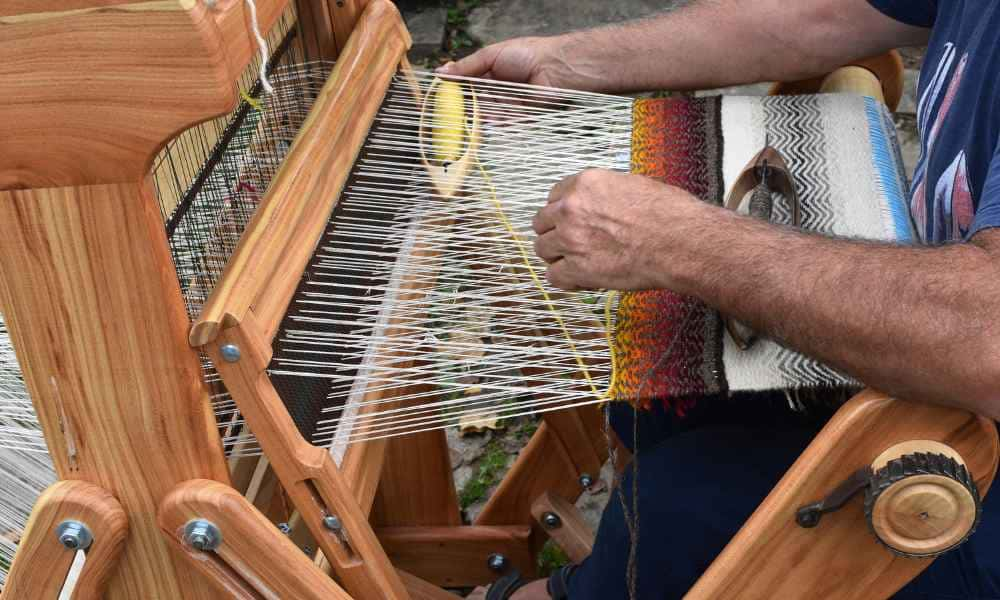
Unfortunately, the number of loans sanctioned by nationalized banks and Regional Rural Banks (RRBs) for the handloom sector has been limited. This has left weavers in Odisha struggling to secure timely financing for their working capital needs, particularly for purchasing essential raw materials such as hank yarns, dyes, and chemicals.
Under the State scheme “Promotion of Handloom Industries” (POHI), weavers are provided with new looms and weaving accessories, but there is no provision for addressing their financial working capital requirements.
Odisha BALIA Scheme 2023 Objective
The primary goal of the scheme is to address the existing challenges faced by weavers and related workers by facilitating timely and adequate financial support through banking institutions. This support is aimed at meeting their working capital requirements in a flexible and cost-effective manner. The scheme is designed to operate in both rural and urban areas and encourages the flow of credit to the handloom sector.
To promote credit availability in the handloom sector, the scheme provides working capital loans with interest subvention to individual handloom weavers and ancillary workers for a duration of three years, with the following objectives:
a) Enabling weavers and ancillary workers to access Cash Credit Loans of up to Rs. 50,000 from banks with interest subvention.
b) Issuing ATM cards to individual borrowers, allowing them to withdraw funds from their Savings Bank accounts.
c) Inclusion of all eligible non-defaulting handloom weavers and ancillary workers in the state to boost credit flow within the handloom sector.
d) Empowering weavers to purchase essential raw materials like hank yarns, dyes, and chemicals per their specific requirements.
e) Enabling weavers to expand their production of handloom products, thus increasing their income.
f) Raising awareness among weavers and ancillary workers about the importance of timely loan repayment.
BALIA Scheme 2023 in News | Limit Increased to 1 lakh
On October 12, 2023, the Odisha Government renewed the scheme and hiked the present loan limit to 1,00,000 rupees. This will support the weavers in a good way. They will now be able to purchase more raw materials which in turn result in more revenue.
The state is home to 66,141 weaving families and 1,24,084 weavers, with a significant presence of 56,569 threads, as documented in the Handloom Census of 2019-20.
As per the scheme’s guidelines, weavers are now eligible to secure working capital loans from banks, tailored to their specific needs, with a maximum limit of Rs 1 lakh, and the best part is that these loans come with zero interest. The scheme will be rolled out in both urban and rural areas, providing vital financial support to the weaving community. In this article, we are going to talk about the scheme in detail. I am certain that by the end of the article, you will left with no doubt regarding the scheme.
BALIA Scheme 2023 Validity/Renewal
The loan limit that has been sanctioned will remain valid for a period of three years. During any given year, the eligible individual can avail of a loan of up to Rs. 1,00,000. The repayment deadline is set one year after the first withdrawal during that year. The renewal date for the loan will be one year from the date of the initial withdrawal.
| Loan Limit Validity | Maximum Loan Amount | Repayment Deadline | Loan Renewal Date |
| 3 years | Rs. 1,00,000 | One year after the first withdrawal within the year | One year from the date of the initial withdrawal |
Odisha BALIA Scheme 2023 Insurance
To provide protection for the livelihood of other members within the weaver’s family in the event of unforeseen events caused by natural disasters or the unexpected passing of the weaver borrower, the bank will arrange insurance for the sanctioned loan through an appropriate insurance agency. The cost of the premium will be covered by the beneficiary.
Odisha BALIA Scheme Debit Card
To acquire an ATM (Debit) Card, weaver borrowers must open a Savings Bank account with the bank. Subsequently, the bank will furnish the weaver borrowers with an ATM (Debit) Card, in addition to a passbook, enabling them to withdraw funds.
Following the approval of the Cash Credit Loan by the bank, the funds will be transferred from the loan account to the Savings Bank account of the weaver. The bank will cover the associated costs.
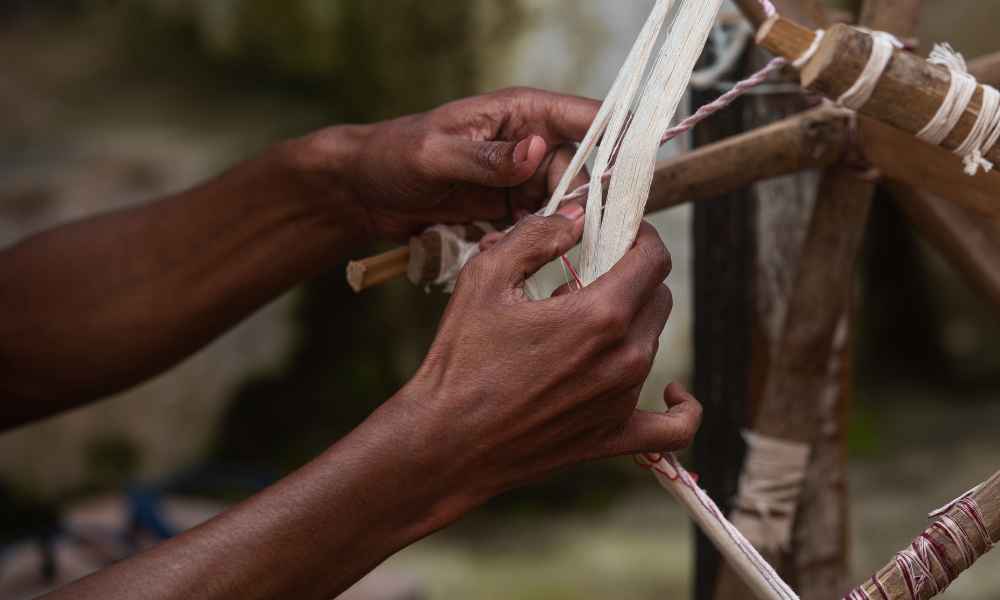
Odisha BALIA Scheme Eligibility Criteria 2023
Eligibility Criteria for the Bunakar Assistance for Livelihood and Income Augmentation (BALIA) scheme are given below
- All handloom weavers and ancillary workers engaged in weaving activities who have a clean repayment record with bank loans will be considered eligible.
- Weavers and ancillary workers within the age range of 18 to 70 years are eligible to apply for assistance.
- In each weaver family or household, only one member is eligible for assistance. A weaver family comprises the weaver, their spouse, and dependent children.
- If a household has multiple looms, other eligible family members, such as the spouse, son, or daughter above 18 years of age, may also apply for assistance.
- Each eligible member can secure a Cash Credit Loan of up to Rs. 1,00,000 from the bank.
- Priority will be given to weavers identified in the 4th Census of Handloom Weavers conducted by the Government of India and those identified by the State Government.
- In exceptional cases, weavers not covered by these methods may be considered if they are members of the Primary Weaver’s Cooperative Society (PWCS) or recommended by the concerned zonal officers (Textiles) as active weavers.
- Emphasis on financing will be placed on clusters of weavers and ancillary workers who have formed Primary Weaver’s Cooperative Societies, Self-Help Groups, or Joint Liability Groups.
- While membership in such entities provides more assurance to banks, financial support will be provided to individual weavers.
- Existing weaver borrowers with a satisfactory track record and ongoing credit facilities with the bank are eligible to avail credit facilities under the scheme for a three-year period.
- Interest subvention will be accessible only to borrowers with a clean repayment history, promoting punctual repayment to the banks.
- The weaver must be a permanent resident or domiciled in Odisha.
- Neither the weaver nor their spouse should be employed in the government or public sector.
- Applicants are required to provide an affidavit or self-declaration confirming that they have not been convicted of any criminal offense. However, under certain circumstances, the government may waive this requirement if the conviction is unrelated to moral turpitude.
Odisha BALIA Scheme 2023 Documents Required
List of Required Documents to Accompany the Application Form:
- Two identical recent passport-size color photographs, self-attested.
- A self-attested copy of the Weavers Identity Card or a certificate confirming the applicant’s status as a legitimate weaver or ancillary worker.
- A self-attested photocopy of the AADHAR Card.
- A document providing proof of the applicant’s age.
- An affidavit or self-attestation affirming that the applicant has not defaulted in loan repayments.
- A No Dues Certificate from other banks operating within the same area.
- Any additional documents are required in accordance with the standard banking procedures.
BALIA Scheme 2023 Loan Procedure
The loan requirements, categorized by component, will be determined by the Director of Textiles. The branch office of the respective District Central Cooperative Bank (DCCB) may proceed to approve the loan application in favor of the weaver applicant. Alternatively, they may reject the application and provide reasons for the rejection or seek clarification on any unclear points from the applicant.
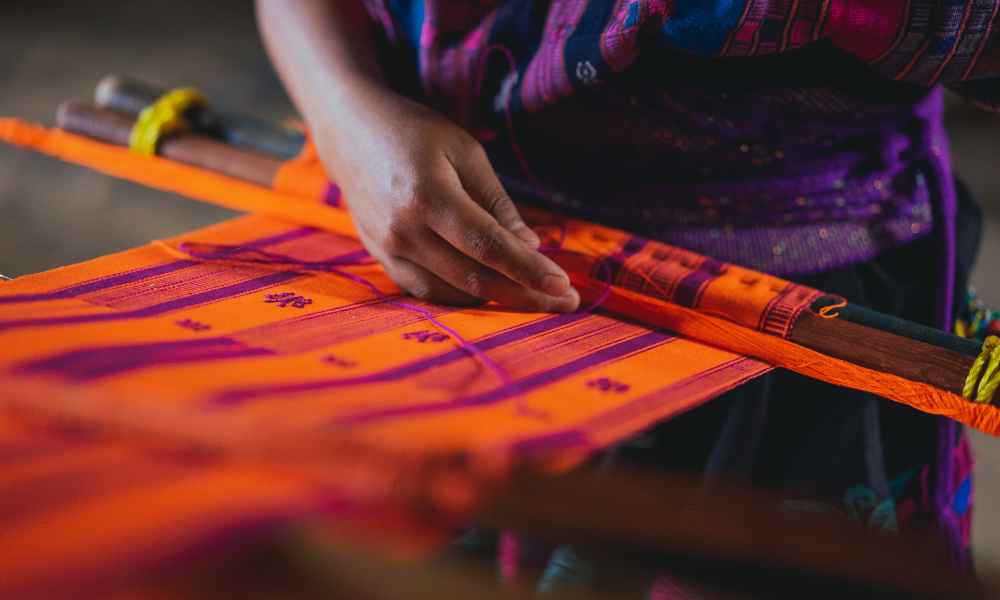
After the bank has approved Cash Credit limits of up to Rs.1,00,000, they will notify the weaver applicant within seven days of the loan approval, with the concerned Zonal Officer (Textiles) also being informed.
Upon receiving this notification from the bank, the weaver applicant is required to open a separate Savings Bank account, following the bank’s established procedures, for conducting financial transactions.
During the loan approval process, the bank will implement hypothecation, which means they will take the loom as collateral in the case of a weaver, or pre and post-loom accessories, equipment, and machinery in the case of an ancillary worker, to secure the loan.
BALIA Yojana 2023 Loan Limit:
The credit limit will be established by assessing the working capital requirements, such as the procurement of raw materials like Hank Yarns, Dyestuffs, Chemicals, Tie & Dyed Yarns, and other essentials necessary for weaving activities.
The maximum credit limit for individual weavers will be set at a maximum of Rs. 1,00,000.
This credit limit is designed to operate as a revolving cash credit, permitting multiple withdrawals and repayments within the set limit. Since the sanctioned limit typically remains valid for a duration of three years, it accounts for accommodating any incremental working capital needs that may arise during this period.
BALIA Scheme 2023 Application Process:
To initiate the application process, interested individuals can obtain the prescribed application form from the branch offices of District Central Cooperative Banks (DCCBs).
Once the application form has been acquired, it should be accurately completed in duplicate. The completed form, along with the required supporting documents, must then be submitted to the respective bank for the loan sanction process.
Upon receiving the application, the relevant bank will initiate the process of document review, conduct physical verification, and document their findings within 15 days from the date of receiving the application form.
BALIA Scheme 2023 FAQs
What is the BALIA scheme?
The BALIA scheme is a government initiative designed to provide interest-free loan assistance to weavers and handloom artisans in Odisha to support their livelihood and income augmentation.
Who is eligible for the BALIA scheme?
Eligibility criteria include being a weaver or ancillary worker, aged between 18 and 70, with a clean loan repayment history. Preference is given to those identified in government censuses, but exceptions can be made for certain cases.
What is the maximum loan amount one can get under BALIA?
The maximum loan amount that an individual weaver can avail under the BALIA scheme is Rs. 1,00,000.
How long is the loan limit valid for?
The loan limit sanctioned under the BALIA scheme remains valid for three years.
How often can I withdraw from the loan amount?
You can make multiple withdrawals and repayments within the sanctioned limit. The repayment deadline is set one year after the first withdrawal within the year.
Is there an insurance component to the scheme?
Yes, the scheme includes insurance coverage to protect the livelihood of the weaver’s family in case of natural calamities or the sudden demise of the weaver borrower. The premium for the insurance is paid by the beneficiary.
How do I apply for ATM (Debit) Card under this scheme?
To obtain an ATM (Debit) Card, you need to open a Savings Bank account with the bank. The bank will then issue an ATM (Debit) Card, along with a Pass Book, for your fund withdrawals.
How can I apply for the BALIA scheme?
Application forms can be obtained from the branch offices of District Central Cooperative Banks (DCCBs). Fill out the form accurately, attach the required documents, and submit the application to the respective bank for loan approval.
Can I join with other weavers to apply for the loan as a group?
While the focus is on individual weavers, the scheme encourages financing for clusters of weavers who form Primary Weaver’s Cooperative Societies, Self-Help Groups, or Joint Liability Groups. This collective approach provides more assurance to banks when lending under the scheme.
